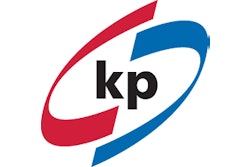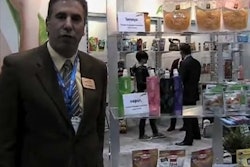In parts one and two of this three-part series on Retail-Ready Packaging, we heard from the experts at IGD, a leading authority on international food and grocery logistics and retailing. In this final installment, we take a look at what the world's third largest retailer, U.K.-based Tesco, has done and is doing with its Retail-Ready Packaging initiatives. Long regarded as the leading innovator where RRP is concerned, Tesco continues to work closely on RRP projects not only with the suppliers whose products occupy Tesco's shelves but also with other stakeholders in the supply chain like the manufacturers of pallets and bread trays.
Like others skilled in RRP, Tesco is a big believer in packaging that is not just "shelf ready" but rather "retail ready" throughout the supply chain. Toward that end, the firm is guided by what it calls The Five Easys:
• Easy to recognize in the warehouse within 2 seconds
• Easy to open in less than 5 seconds
• Easy to replenish with only one touch
• Easy to shop
• Easy to collapse/break down in 2 seconds
"We've always been driven by wanting to make it easy to replenish our shelves and easy for our shoppers," says Tesco's Liz Hulbert, head of replenishment, step change team.
One-touch replenishment is popular at Tesco. The idea is to use secondary packaging that lets store personnel put multiple primary units on a shelf in one movement rather than removing all 12 from a corrugated shipper and placing them one at a time on a shelf. "We're about 65% there when it comes to one-touch replenishment," says Hulbert. "In some areas we're farther ahead than in others. With biscuits or confectionery, for example, we're about 98% there. In other areas, like frozen food, we have a ways to go."
Hulbert makes it pretty clear, too, that she counts packaging material suppliers among her allies in the battle to spread the gospel of RRP. "I think one of the biggest things that's helped us lately is that packaging technology has come forward with good solutions. We've moved, for example, from a brown corrugated box that's difficult to recognize, open, and dispose of to a box that's clearly identifiable in the store's back room, easy to open thanks to perforations and such, and easy to dispose of because it's a crash-lock design that doesn't need any glue and can be easily collapsed. We have some great working relationships with our packaging suppliers, and their innovations have clearly helped us forward in RRP."
Brilliance in the bread aisle
A look at what Tesco has come up with in the bread category is a brilliant example of supply chain harmonization. The key shortcoming of the bread delivery and display system in place previously at Tesco was that every bread supplier had its own reusable trays. Bags of sliced bread were placed on trays at the bakery, wheeled onto a truck, wheeled into Tesco stores in whatever manner each bakery favored, and then removed from trays one loaf at a time and placed on store shelves. Not only was it disorganized, inefficient, and labor-intensive, the amount of handling involved led inevitably to damaged or shopworn product.
Tesco brought harmony to this cacophonous scene by working closely with packaging supplier Linpac and all of Tesco's bread suppliers on the development of one tray and one set of wheels that all suppliers of bagged sliced bread use. When a bakery delivery truck reaches a Tesco store, the store-door route driver no longer has to take the bread out to the bread aisle and restock the shelves one loaf at a time. The bread is simply wheeled out to the bread aisle and parked beneath the specially designed display shelving. Bags of bread are lifted one tray at a time and clipped into the shelving, which slants slightly downward so that the individual loaves are gravity fed in the direction of the consumer.
Individual loaves of bread are no longer touched by store personnel. Also hugely beneficial from a display standpoint is that now the top of the loaf with all its branding and graphics faces the consumer instead of the end of the loaf, which usually is adorned with nothing more than a twist tie or clip.
"This has been a huge success for us," says Hulbert. "If you can work collaboratively with multiple suppliers to come up with the best equipment for stores, and then work it back through the supply chain, you end up with fresher product for the customer because now we don't have to handle every loaf of bread. Also, the trays are designed with a bale arm that flips back to allow the trays to nest. So the return logistics are very efficient."
Hulbert and her colleagues at Tesco have made significant progress in the chilled cabinet, too. Take pizzas, for example. Once upon a time, they were oriented horizontally like so many rows of stacked pennies. But now they stand up on end in a 12-count retail-ready tray.
"The toppings don't tumble to the bottom because the primary packaging is designed to hold them in place," says Hulbert. "We even had the tray designed so that each pizza tilts back just slightly for better display." The change brought a 35 percent increase in sales, adds Hulbert.
Re-orienting sausages in a similar way was in some ways even more challenging because of the liquid they exude. "Everybody said we couldn't do it, that you had to have that soaker pad beneath the sausages," recalls Hulbert. But the meat packer supplier was challenged to find a way and pulled it off by modifying the package so that the pad is in the foot of the stand-up tray.
In addition to delivering one-touch replenishment, better display impact, and a better shopping experience for the customer, the new sausage package reduced damaged packs. "Just like with the loaves of bread, when you're handling every pack, you increase the chance of puncturing the lidding film or otherwise damaging the package somehow.
The importance of innovation
Hulbert points out repeatedly how important a role innovation plays when it comes to RRP, and she says a classic example of that innovative spirit at work is the wheeled pallet.
"Tesco will be the first to use it on a large scale," says Hulbert. "It goes through the complete supply chain efficiently, from one end to another. On an automated packaging line or in a truck during transport, it's a pallet. But when it reaches Tesco, it becomes a dolly. It's even designed to have a handle attached to it."
The K-roll pallet Hulbert refers to comes from DS Smith Replen. It has a foot-activated mechanism that, when kicked by a store operator, lifts runners to expose wheels. When the mechanism is kicked in the opposite direction, the runners lock down and the device reverts to being a stationary pallet. It's stackable when empty or when loaded, it measures 800 x 600 mm, it weighs 13 kg, it's easily washed, and it's designed for long life.
According to DS Smith Replen's Peter Maple, an enormous amount of R&D lies behind the wheeled pallet. It must be stiff enough to withstand some 500 kg (1,100 lb) yet have incredible impact-resistance because it will inevitably get dropped and generally banged around a good deal during its useful life. The solution was to use two different polypropylene compounds in the high-pressure injection-molding process used to make the pallet. Most of the flat parts on which the load rests are a PP compound that exhibits good top-load bearing strength. But the "legs" and skirting, which will absorb most of the drops and crashes, are made from a PP compound with superb impact resistance. Total number of parts in one pallet: about 92.
"It may look like a pretty simple black plastic pallet," says Maple. "But the journey on which it took us and the amount of collaboration required was pretty remarkable."
Says Tesco's Hulbert: "We'll have about 120,000 units in the business by Christmas."
That's the kind of trailblazing we've come to expect from Tesco where RRP is concerned. Hulbert sums it up this way.
"As long as we continue working with suppliers to get the right packaging solution, one that moves the product through distribution optimally and makes it easier for in-store staff to recognize, open, and deliver to the shelf, we're delivering a better shopping experience for our customers."
Tesco still the leader in Retail-Ready Packaging
A brilliant solution in the bagged bread aisle and an innovative wheeled pallet are just a few of the RRP tricks Tesco has up its sleeve.
Nov 13, 2010
Companies in this video
Machinery Basics
Get a jump on your 2026 packaging & processing goals at PACK EXPO East.
Be the first to find what’s next in packaging & processing at PACK EXPO East. See new solutions from 500 exhibitors, uncover creative ideas for 40+ verticals and gain inspiration from free sessions on industry trends—all in one trip to Philadelphia.
REGISTER NOW & SAVE
Annual Outlook Report: Workforce
Hiring remains a major challenge in packaging, with 78% struggling to fill unskilled roles and 84% lacking experienced workers. As automation grows, companies must rethink hiring and training. Download the full report for key insights.
Download Now
Downloads






















